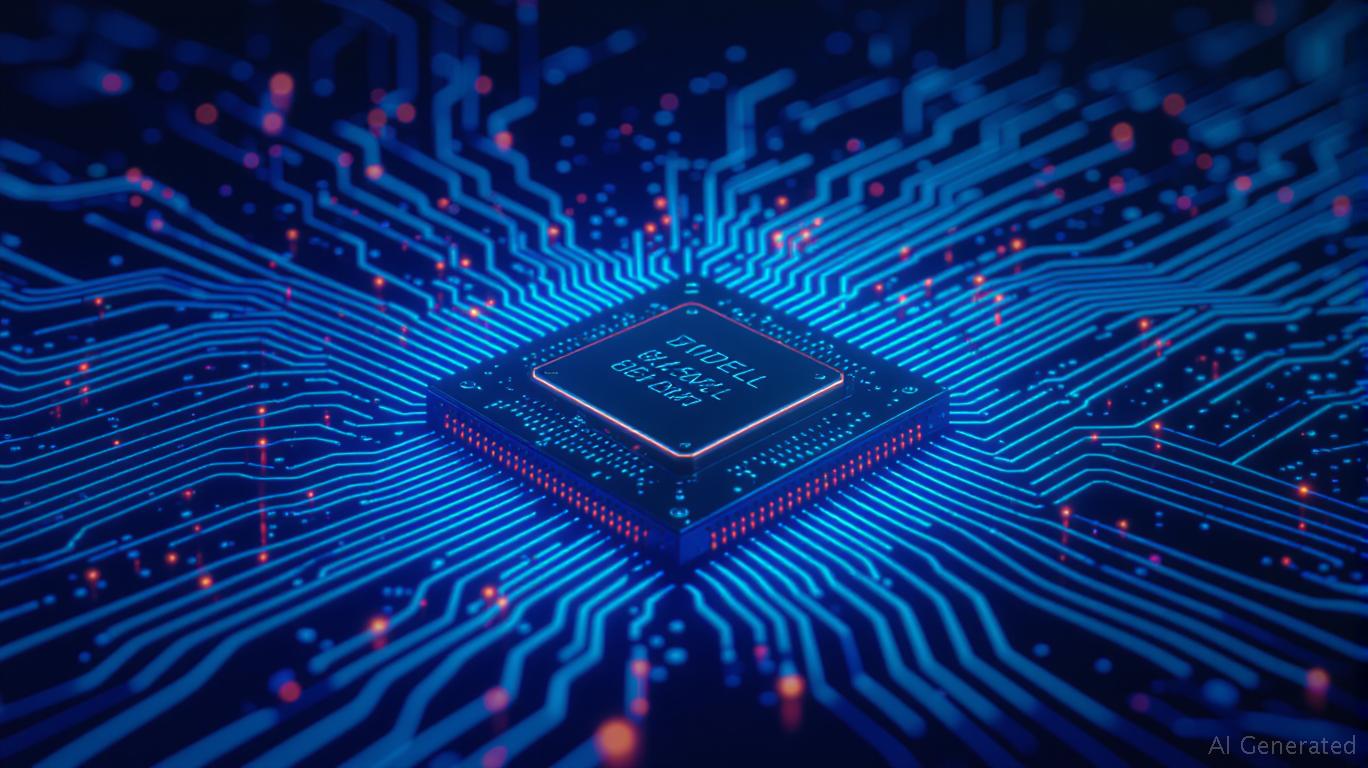NVIDIA's AI-Driven Dominance: Why the Data Center Surge is Just the Beginning
The AI revolution is no longer a distant possibility—it's here, and it's rewriting the rules of technology. At the epicenter of this transformation sits
, whose Q2 2025 earnings report unveiled a staggering $26.3 billion in Data Center revenue, up 154% year-over-year. This isn't just growth; it's a seismic shift in the tech landscape, fueled by NVIDIA's unmatched ability to capitalize on AI's insatiable hunger for compute power. Let's dissect why this isn't a fleeting boom but the start of a decades-long structural shift—and why investors should pay attention.The Data Center Gold Rush: NVIDIA's AI Moat
NVIDIA's dominance stems from a multi-layered competitive moat that competitors like
and are struggling to breach. The company's hardware-software ecosystem creates a flywheel effect: advanced chips (like the Hopper and Blackwell architectures) drive demand for AI frameworks (e.g., CUDA, Omniverse), which in turn attract developers and enterprises, further locking in customers.Take the Blackwell architecture, now in advanced sampling stages. This next-gen platform, which combines GPU, CPU (Grace), and DPU into a unified system, promises 30x faster inference for large language models. NVIDIA expects Blackwell revenue to hit “several billion dollars” by Q4 2025, but its true value lies in its scalability. The Blackwell-based GB 200 NVL72 system can run trillion-parameter models in real-time—a capability that's already attracting sovereign AI projects like Japan's ABCI 3.0 supercomputer.

Why AI Demand is Structural—and NVIDIA Owns It
The AI boom isn't a fad. It's a foundational shift in how businesses operate, from customer service (Amdocs' 30% cost reduction using NVIDIA AI agents) to drug discovery (via NVIDIA's NIM Agent Blueprints). NVIDIA's AI Foundry Service, launched in Q2, now lets companies like
deploy Meta's Llama 3.1 models at scale, reducing development time by months. This isn't just selling hardware—it's selling AI as a service, a recurring revenue stream that's barely tapped.Meanwhile, NVIDIA's networking solutions like Spectrum-X Ethernet are enabling the massive compute clusters required for AI. With performance 1.6x faster than prior generations, Spectrum-X is projected to become a multi-billion-dollar product line within a year. This isn't just about speed—it's about enabling the infrastructure to scale from thousands to millions of GPUs, a critical threshold for global AI adoption.
This chart underscores NVIDIA's widening lead: while AMD inches forward, NVIDIA's AI-centric strategy is pulling away.
Risks? Yes. But the Upside Outweighs Them
Supply constraints on Blackwell and Hopper remain a near-term headwind, but NVIDIA's financial outlook is bullish: $32.5 billion in Q3 revenue, with software and SaaS hitting a $2 billion annual run rate by year-end. Even in China, where U.S. export controls have curbed growth, sequential Data Center revenue growth in Q2 hints at underlying demand.
The real threat? Competition catching up. AMD's MI300X and Intel's Ponte Vecchio aim to rival NVIDIA's AI chips, but they lack NVIDIA's ecosystem and software depth. As one analyst quipped, “You can build a better GPU, but you can't build a CUDA overnight.”
Investment Thesis: Buy the Dip, Hold the Moat
NVIDIA's valuation is no longer just about GPUs—it's about owning the AI stack. With $26.3 billion in Data Center revenue and a pipeline extending into sovereign AI, enterprise software, and robotics, this is a decade-long story.
The dips—like those caused by Blackwell's supply crunch—are buying opportunities. Long-term investors should focus on the structural tailwinds:
1. AI's compute intensity: Every new LLM, autonomous vehicle, or enterprise AI tool needs NVIDIA's infrastructure.
2. Software monetization: NVIDIA's AI-as-a-service model adds recurring revenue to its hardware sales.
3. Sovereign AI spending: Governments won't outsource AI infrastructure to cloud giants; they'll build their own, using NVIDIA's tech.
This chart shows NVIDIA outperforming the market during AI's rise—proof that its moat isn't just theoretical.
Final Take: NVIDIA is the of the AI Era
Just as Tesla redefined automotive innovation, NVIDIA is the gatekeeper of the AI economy. Its ecosystem, R&D prowess, and first-mover advantage in AI hardware/software create a near-insurmountable lead.
For investors: Hold through the volatility. The Data Center surge isn't the peak—it's the foundation. The next frontier? Blackwell-powered trillion-parameter models, AI-driven drug discovery at scale, and a global race to own AI infrastructure. NVIDIA isn't just riding this wave—it's building the boat.
Investment Grade: Buy
Sign up for free to continue reading
By continuing, I agree to the
Market Data Terms of Service and Privacy Statement

Comments
No comments yet